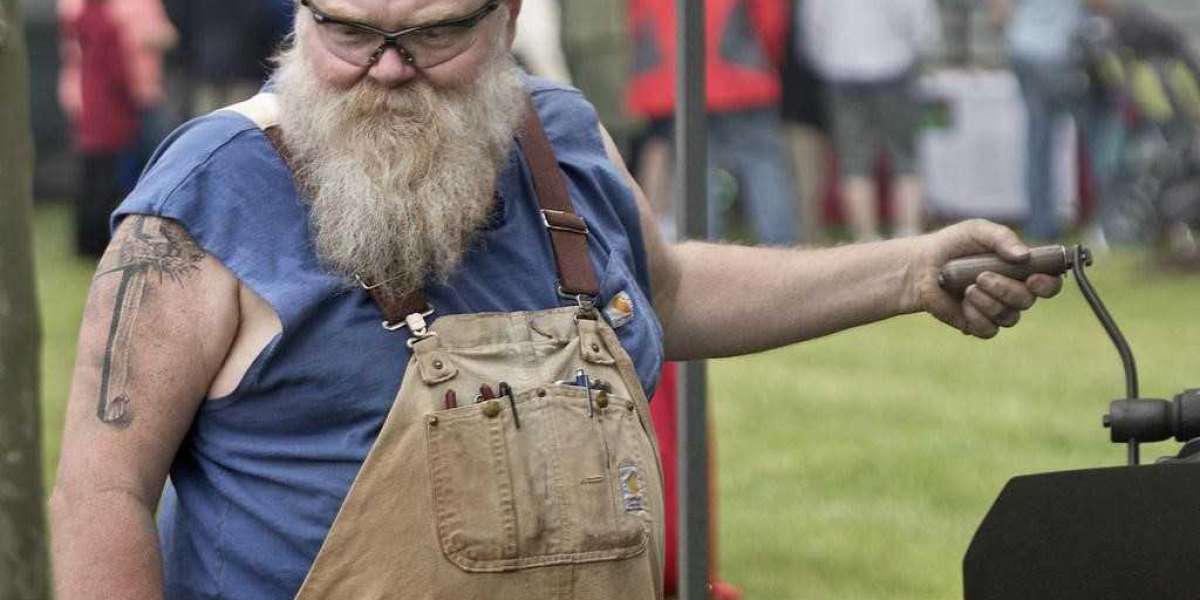Welding is a demanding profession that involves extreme heat, molten metal, and flying sparks. To ensure safety and efficiency, welders need durable, high-quality protective gear. One of the most essential pieces of equipment is a leather apron. In this article, we’ll explore why a leather apron for welding is the best choice, its key features, and what to look for when purchasing one.
Why Choose a Leather Apron for Welding?
Welders face intense heat, metal splatter, and sparks, making proper protection essential. Leather aprons offer superior protection compared to other materials. Here are some reasons why leather aprons are ideal for welding:
Heat resistance: Leather can withstand extreme temperatures, providing a crucial barrier between the welder and molten metal.
Durability: High-quality leather aprons last longer and resist wear and tear.
Protection from sparks and debris: Leather is flame-resistant and offers excellent protection from flying sparks, reducing the risk of injury.
Comfort: While thick and protective, leather becomes suppler over time, offering a comfortable fit that molds to the welder’s body.
Types of Leather Used in Welding Aprons
Not all leather is the same, and different types of leather offer varying levels of protection and flexibility. When selecting a leather apron for welding, it's important to understand the different types of leather used:
Split Grain Leather
Split grain leather is made from the lower layers of the animal hide and is commonly used in welding aprons. It provides excellent durability, heat resistance, and a rugged texture that offers extra protection from sparks.
Full Grain Leather
Full grain leather is stronger and more durable than split grain leather. It is the outermost layer of the hide and maintains the leather’s natural texture. Full grain leather offers the highest level of protection but can be heavier and less flexible compared to split grain leather.
Cowhide Leather
Cowhide is the most commonly used leather for welding aprons due to its balance between durability, heat resistance, and flexibility. Cowhide is thick and tough, making it ideal for heavy-duty welding tasks.
Pigskin Leather
Pigskin leather is lighter and more breathable than cowhide, making it a great option for welders working in hot environments. While it may not offer the same level of protection as cowhide, it still provides good heat and spark resistance.
Key Features of a Leather Apron for Welding
When selecting a leather apron for welding, several key features should be considered to ensure it meets your safety and comfort needs.
Length and Coverage
A good welding apron should provide full coverage to protect your torso, thighs, and legs from heat and sparks. Some aprons extend down to the knees or ankles for maximum protection, while others stop at mid-thigh for better mobility.
Adjustable Straps
Look for leather aprons with adjustable straps that ensure a secure fit. Cross-back straps are ideal as they distribute the weight evenly across your shoulders, preventing neck strain. Adjustable waist straps also help to keep the apron snug and comfortable during long welding sessions.
Flame and Heat Resistance
The primary function of a leather apron is to protect the wearer from high temperatures. Make sure the apron is made from high-quality leather that can withstand sparks, flames, and molten metal splatter.
Reinforced Seams
Heavy-duty welding aprons should have reinforced seams to ensure durability. Welded or riveted seams add strength and longevity to the apron, preventing it from fraying or tearing after extended use.
Pockets for Tools
Welding aprons often feature pockets for storing tools, gloves, or other essentials. Deep, secure pockets help keep tools within easy reach while you work. Be sure the pockets are positioned away from high-heat areas to avoid accidental damage.
Benefits of Wearing a Leather Apron for Welding
Wearing a leather apron while welding provides several significant benefits beyond basic protection. Here are some advantages of using a leather apron for your welding tasks:
Increased Safety
Leather is naturally resistant to flames and sparks, making it an excellent material for protecting welders from burns and injuries. The thickness and durability of leather reduce the risk of hot metal shards or debris penetrating the apron and reaching your skin.
Improved Comfort
Though leather aprons may feel stiff initially, they become more comfortable over time as the material molds to your body. The apron provides a buffer against heat while still allowing for freedom of movement, making long welding sessions more manageable.
Durability and Longevity
Leather aprons are built to last. They withstand the rigors of heavy-duty welding, making them a long-term investment for your safety gear. A well-maintained leather apron can last for years, providing consistent protection over time.
Versatility
A leather apron can be used across various welding processes, including arc welding, MIG welding, TIG welding, and oxy-fuel welding. Its versatile design makes it suitable for different tasks while offering superior protection in any welding environment.
Conclusion
A leather apron for welding is an essential piece of protective equipment for anyone working in this hazardous profession. With its superior heat resistance, durability, and comfort, leather ensures welders remain safe from the dangers of sparks, flames, and molten metal. When choosing an apron, prioritize quality materials, adjustable features, and sufficient coverage to ensure you’re fully protected.








